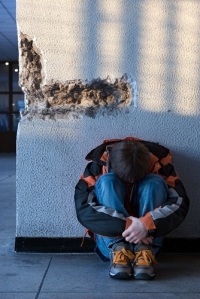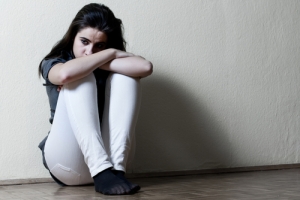
It’s that time of year again and once again a barrage of ads – depicting perfect families, festive fun and Christmas cheer – stream relentlessly into our cosy living rooms. We all know life isn’t this perfect or ideal, but for some young people across the UK, their reality couldn’t be more distant.
Many young people across the UK this Christmas are facing a festive period of poor health, malnourishment and loneliness – why? Because they are homeless.
Here at No Limits we have seen an increasing demand on our services from homeless young people. Last year we saw 576 young people at risk of homelessness, 300 were sofa surfing and 191 were street homeless. Our services are highly cost effective. Each quarter our work with homeless young people is saving local (Southampton and Hampshire) services over £300,000 per quarter…over £1.2 k per year (Crisis Performance Indicators)
Thousands of young people throughout the UK are currently homeless. In real terms 75000 young people sought help from services when they became destitute, which means shockingly 1 in 100 young people in the UK have experienced homelessness in just one year (19% of all young people). Help is not always available or pursued and many resort to sleeping rough on the streets, becoming increasingly disengaged with society.
Since 2010, Government figures highlight that the number of homeless young people have intensified, in fact increasing by a third. Many factors could be attributed to this increase, including: the economic downturn, low-income families struggling to make ends meet, welfare reforms such as bedroom tax and JSA sanctions. Some young people once made homeless or of no fixed abode, face an uncertain future with potentially grim prospects.
“With rising youth unemployment, a changing welfare system and many families struggling to get by, youth homelessness is likely to get worse.” Said Jacqui McCluskey, the director of policy and communications for Homeless Link
That’s not all. 53% of homeless agencies were closed or were threatened with future closure thanks to a decrease or complete withdrawal of government funding. These figures highlight the abhorrent threat to the third-sector – specifically youth organisations, which are vital to our society.
Once young people become destitute, a multitude of problems become a horrifying reality.
They are:
- More likely to suffer with drug and alcohol problems
- More likely to become NEET (not in education, employment or training)
- Very likely to be excluded or willingly leave the education system
- Vulnerable to prostitution
- More likely to engage in anti-social behaviour/crime
- More likely to suffer with poor health
Why are so many young people becoming homeless?
According reports, the biggest factor in homelessness in the UK is “family breakdown”, usually between the young person and their parents/step-parents. Some young people endure such relentless emotional/physical conflict within their home environment that becoming homeless is considered a better option.
Often young people resort to sleeping on night buses, in car-parks or squats. Sometimes friends are willing to put them up for short periods of time, but sofa-surfing is a temporary means to an end and often doesn’t last for more than a few days.
Who is likely to become homeless?
Young people who come from various problematic backgrounds are more likely to become homeless. Including:
- People who have been in care (6% of all care leavers become homeless)
- People who have been excluded from school
- People who run away from home
- People who suffer any form of abuse at home
- People from financially deprived circumstances
- People aged 19 or 20 (31%)
- People aged 21-25 (50%)
Many young people do not expect to become homeless and find it extremely difficult to cope with their appalling situations.
“I moved away cos of what me [sic] dad did to me mum, me dad used to abuse me mum, beat her up and that.” Said twenty-something, Neil, who became unexpectedly homeless following the breakdown of his family unit.
Where can young people go to get help?
There are a number of organisations that can support young people with the process of finding temporary accommodation, as well as helping them find long-term solutions, through addressing problems affecting their circumstances, such as joblessness, family dysfunction and drug and alcohol abuse.
This problem will not be going away any time soon and is likely to get worse, thanks to increasing youth unemployment, but we can do something. We can support young people who are struggling to survive by donating money/time or food to charities who are committed to providing assistance. Donating food parcels to food banks or a participating supermarket is another way to really help provide to those in desperate need.
Spare a thought for the thousands of homeless young people, who aside from being lonely, deprived and at risk – will have nowhere to sleep on Christmas day.
Do your bit this Christmas. Make a real difference. Give to someone who really needs it.
No Limits: Helping young people help themselves.
By Max Willis









 A report by the National Union of Students found that during the university experience, as much as 1 in 4 students will suffer from mental health problems. Of the estimated 2.5 million new university starters, 625,000 will experience mental health problems. This is an exceedingly large number and calls into question why there has been no greater government involvement on the issue. Even more alarming has been the information
A report by the National Union of Students found that during the university experience, as much as 1 in 4 students will suffer from mental health problems. Of the estimated 2.5 million new university starters, 625,000 will experience mental health problems. This is an exceedingly large number and calls into question why there has been no greater government involvement on the issue. Even more alarming has been the information 

